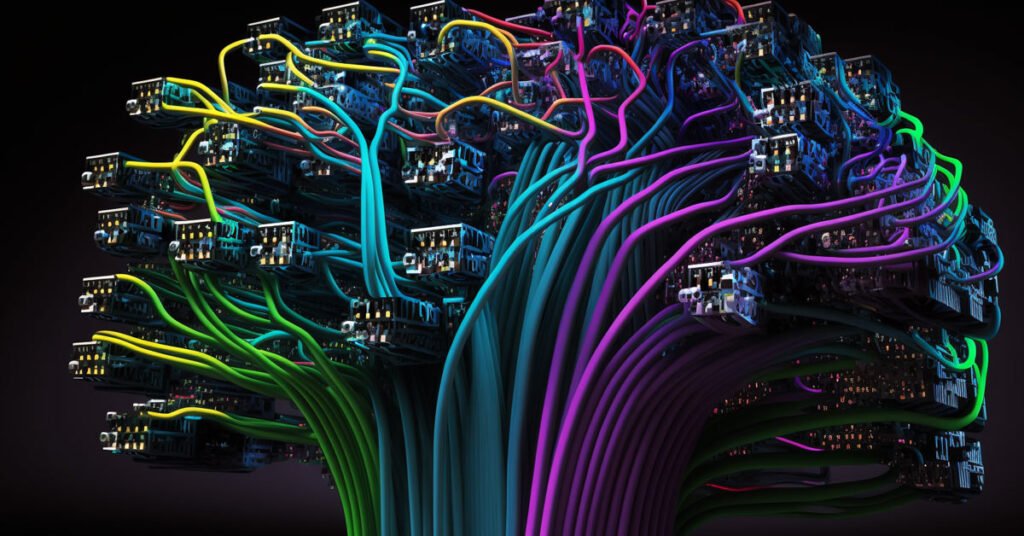Healthcare is one of the most crucial domains that has benefited immensely from the advancements in machine learning. In this article, we explore the popular machine learning techniques that are transforming the healthcare industry, enhancing patient care, and improving overall efficiency.
1. Supervised Learning
Supervised learning is the most commonly used machine learning technique in healthcare, where algorithms learn from labeled training data.
1.1. Classification
Classification techniques are used to categorize data into different classes or groups.
- Decision Trees
- Decision trees help in visualizing and analyzing complex decision-making processes.
- They are commonly used in medical diagnosis and treatment planning.
- Support Vector Machines (SVM)
- SVM is a powerful technique for handling high-dimensional and nonlinear data.
- It is widely used in medical image analysis, gene expression classification, and protein structure prediction.
1.2. Regression
Regression techniques are used to predict continuous numerical values.
- Linear Regression
- Linear regression is used to model the relationship between input features and a continuous output variable.
- Common applications include predicting disease progression and patient recovery time.
- Logistic Regression
- Logistic regression is used to model the probability of a certain event occurring.
- It is often used in healthcare for risk assessment, disease prediction, and patient readmission prediction.
2. Unsupervised Learning
Unsupervised learning techniques help discover hidden patterns in data without any prior knowledge or labeled data.
2.1. Clustering
Clustering algorithms group similar data points together.
- K-means Clustering
- K-means is a widely-used clustering algorithm that is simple and efficient.
- It is commonly used for patient segmentation, disease subtyping, and drug discovery.
- Hierarchical Clustering
- Hierarchical clustering creates a tree-like structure to represent the relationships among data points.
- It is used in genomics, proteomics, and medical image analysis.
2.2. Dimensionality Reduction
Dimensionality reduction techniques are used to reduce the complexity of high-dimensional data.
- Principal Component Analysis (PCA)
- PCA is a widely-used linear dimensionality reduction technique.
- It is commonly used in medical image compression, genomics data analysis, and disease biomarker identification.
- t-Distributed Stochastic Neighbor Embedding (t-SNE)
- t-SNE is a non-linear dimensionality reduction technique.
- It is often used in visualizing high-dimensional data, such as single-cell RNA sequencing data and medical images.
3. Deep Learning
Deep learning techniques use artificial neural networks to learn complex patterns in data.
3.1. Convolutional Neural Networks (CNN)
- CNNs are particularly effective in image analysis tasks.
- They are widely used in medical image classification, segmentation, and registration.
- Applications include tumor detection, organ segmentation, and disease diagnosis from medical images.
3.2. Recurrent Neural Networks (RNN)
- RNNs are designed for sequence data and are used in healthcare for time-series analysis.
- Applications include predicting patient outcomes, analyzing electronic health records (EHR), and forecasting healthcare resource utilization.
3.3. Autoencoders
- Autoencoders are unsupervised learning algorithms that learn to represent data in a lower-dimensional space.
- They are used for feature extraction, dimensionality reduction, and anomaly detection in healthcare data.
4. Reinforcement Learning
Reinforcement learning techniques are used in healthcare to optimize decision-making processes.
- Applications include treatment planning, drug discovery, and personalized medicine.
- For instance, reinforcement learning can be used to determine optimal treatment strategies for patients based on their unique characteristics and medical history.
4.1. Q-Learning
- Q-learning is a popular model-free reinforcement learning technique.
- It is used for optimizing medical treatment policies, patient scheduling, and resource allocation.
4.2. Deep Q-Networks (DQN)
- DQN combines deep learning with Q-learning to handle high-dimensional state spaces.
- Applications include optimizing treatment dosages, robotic surgery, and drug design.
4.3. Monte Carlo Tree Search (MCTS)
- MCTS is a search algorithm used for decision-making in complex and uncertain environments.
- It is used in radiotherapy planning, drug discovery, and disease diagnosis.
Final Thoughts
The application of machine learning techniques in healthcare has led to significant improvements in diagnosis, treatment, and patient care. By leveraging supervised learning, unsupervised learning, deep learning, and reinforcement learning, healthcare professionals and researchers can make more informed decisions, identify patterns, and optimize processes. As machine learning continues to evolve, its impact on healthcare will undoubtedly continue to grow, paving the way for more personalized and efficient care.
- Whispers from the Dark - April 19, 2023
- Pablo’s story - April 18, 2023
- Sightings of a Skunk Ape - April 18, 2023




Itís nearly impossible to find well-informed people for this topic, but you seem like you know what youíre talking about! Thanks